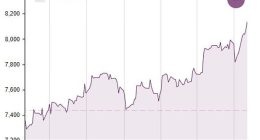
Opinions expressed by Entrepreneur contributors are their own.
Recently, my wife hired a nutritionist to help her get healthy and improve her diet. My wife is not easily swayed, and she likes to weigh potential outcomes and consequences before committing to a course of action. So, I asked my wife why she had hired one nutritionist and not the several others she had interviewed.
She said there were two main reasons: she felt heard, and the nutritionist followed up.
Know what your customer wants
The nutritionists my wife didn’t choose seemed to be selling her something she didn’t want. She felt it was like she was going to a painter to help her paint her house, but they kept wanting to do landscaping.
The other nutritionists were nice and pleasant. But my wife had a very special and specific need. She didn’t want medicine or Weight Watchers. She wanted a guide and a coach to help her in her daily routine. This nutritionist who got the job actually listened and understood what my wife wanted.
Related: Are You Really Listening to Your Customers? Probably Not, But You Should.
Follow up, follow up, follow up!
Secondly, the nutritionist who was hired followed up. Often, your next customer will not buy from you the first time you have a conversation with them.
Maybe they’re not ready quite yet. Maybe they’re in the middle of traffic when you speak with them. Maybe there are screaming kids in the car. Maybe it’s simply a bad time.
Whether you’re a nutritionist, lawyer, accountant, web designer or any other type of entrepreneur, these two principles of understanding who your customers are — and what they want — and the power of following up are essential for the growth of your business.
Related: How to Write Follow-Up Emails That Get Answered
How to better understand your future customer
Understanding who your customers are and their problems and concerns is essential for small business owners and entrepreneurs to grasp. My best sales happen when I really listen to and understand the customer. Here are a few tips to help you do this better.
1. The importance of questions. Understanding your potential clients is all about asking insightful questions. This practice isn’t limited to the queries themselves but extends to how you ask the question. It is crucial to initiate conversations that make your customers feel at ease when expressing their preferences and thoughts.
2. Active listening and engagement. Listening actively is as crucial as the questions asked. This involves tuning into not just the words spoken but also gleaning insights from the tone, the pauses and the enthusiasm behind them. Exploring their previous encounters with similar services or products can shed light on their preferences, helping tailor your service or product to better meet their needs. The nutritionist my wife hired did a great job asking the right questions and understanding her needs.
3. Understanding customer expectations. Inquiring about your customers’ definition of success gives you a clear picture of their goals. This not only aids in aligning your offerings with their expectations but also demonstrates your commitment to fulfilling their unique needs.
Related: How Top Sellers Anticipate Customer Needs
How to use tech to follow up with future customers
1. Utilize CRM Systems. CRM platforms can help you consolidate client data, including contact details, preferences, and previous engagements. They also enable personalized follow-ups. They can even help you know when it’s time to reach out to clients based on predefined schedules or after specific triggers, ensuring no client feels neglected. Tools such as Hubspot, Keap, Zoho CRM, and Nimble are great for this.
2. Task reminders for consistency. Task reminder apps are simpler tools but immensely powerful for keeping follow-ups on track. They can be set to remind you to reach out to your clients at optimal times, making the process more systematic. This approach is particularly effective for individual professionals or small businesses that might not need the full suite of CRM functionalities but still prioritize consistent communication. Tools such as Asana, Google Tasks, Outlook 365 Tasks and many others can help.
3. Marketing automation. Marketing automation takes follow-ups to a new level. From sending personalized emails based on client actions to scheduling social media posts that keep your business in the loop, these tools make client engagement continuous and consistent. For instance, after an initial consultation, a nutritionist could set up an automated email sequence to share helpful tips, encouraging messages or gentle reminders to book a follow-up appointment, seamlessly maintaining the client relationship.
Related: 4 Insane Truths About Failing to Follow-up
Summary
This was a straightforward example of how a nutritionist “beat out” other nutritionists to “win the sale.” She got my wife — who is not easily sold (I might add) — to buy a product.
Follow up. Keep following up with the customer, especially if you know you’re a fit for them and have the solution they need. Don’t be annoying — but follow up. Understand who your customer is, their goals and needs, and how you can help them reach their desired outcome.
This article is from Entrepreneur.com









